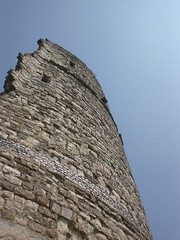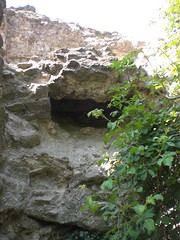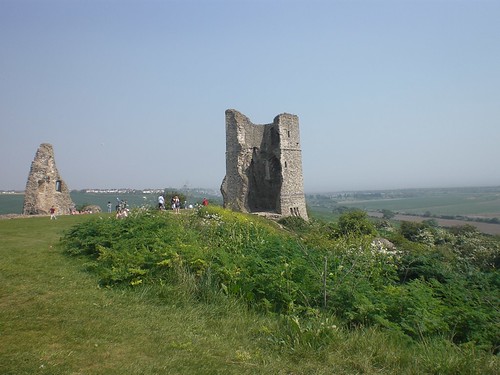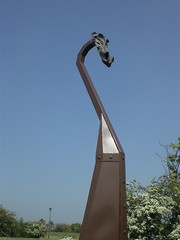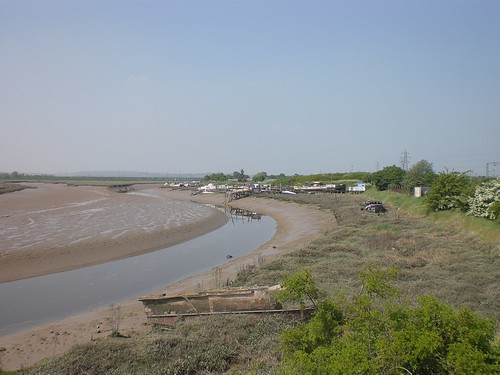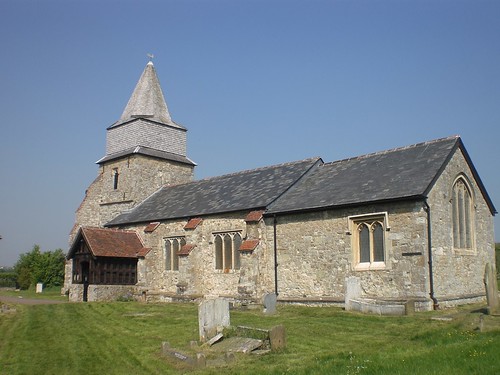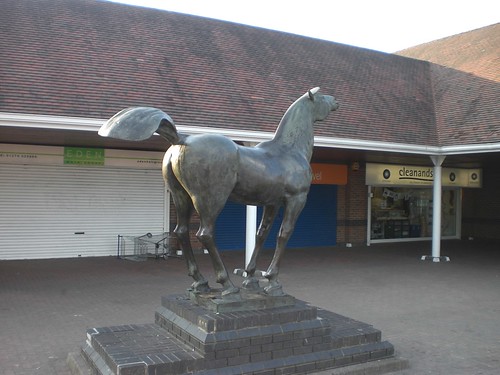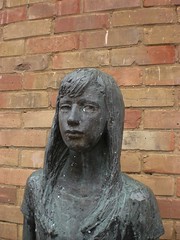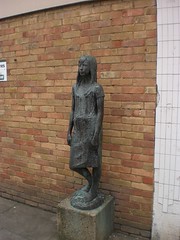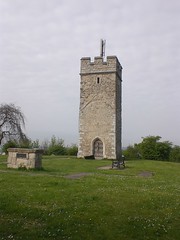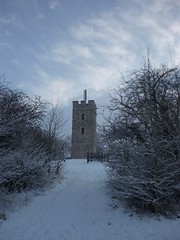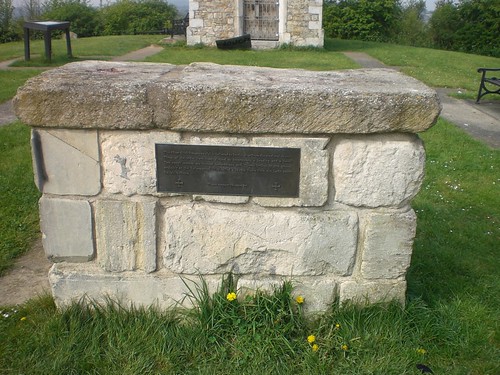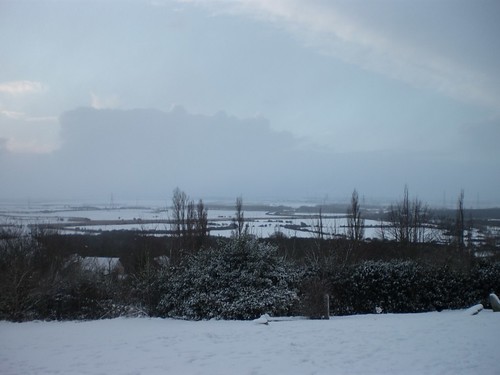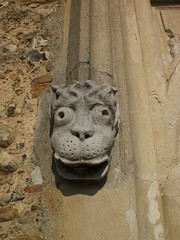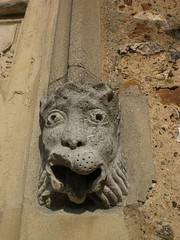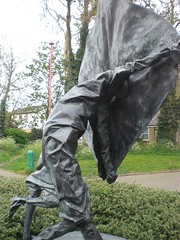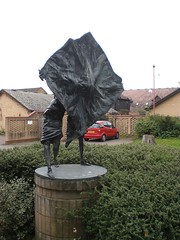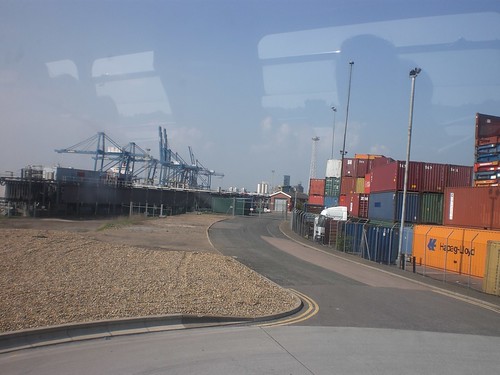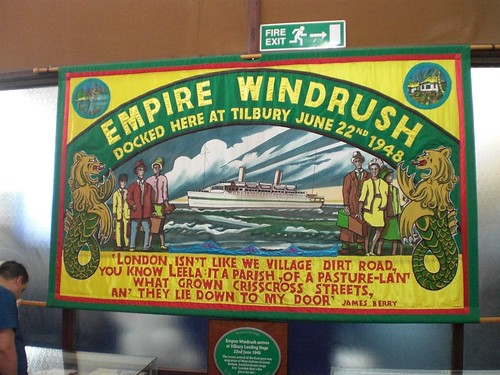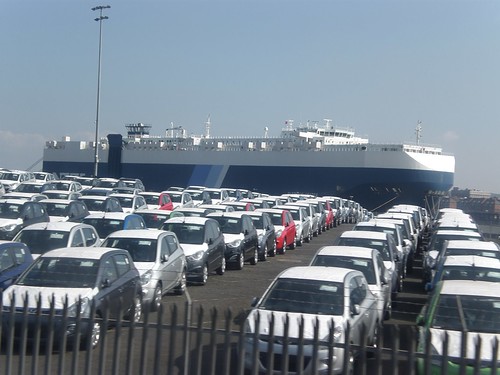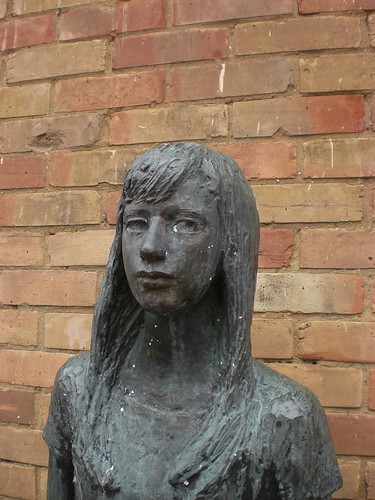On Easter Saturday / St Georges Day, I forewent the pleasures of decorating for an exploration of what might loosely be described as "my patch". This week, I'll be posting a short series of posts talking about what I saw, but for now here is the route I followed. If you want to do something similar, it's mostly straightforward footpaths, although the section just east of the A130 is stiles through fields, and Hadleigh Country Park is quite hilly in places.
I started at the base of St Michaels Mount, picking up the footpath towards St Margarets Bowers Gifford. The signage was less than clear, and the footpath initially quite narrow, squeezed between the back gardens of a row of houses and the railway fence.
Once clear of the houses, the path opens up into an area of mostly low lying scrubland. The path follows alongside the railway line (Pitsea to Southend on C2C) all the way to St Margaret's church where I paused for a drink of water.
After the church, the path continues alongside the railway line until veering off to pass under the A130 (Canvey Way). Immediately after the A130, the path is less well defined, taking you through a series of small fields which contained horses. A series of stiles enables the crossing of the fences.
On leaving the farm, the path narrows again, passing behind some houses before entering an area of parkland in Benfleet, and then the town itself. I took a small detour to visit the Church of St Mary the Virgin and then had lunch in a pub, The Half Crown.
Leaving the station on my right, I walked up Station Road before picking up the path from the top of the road. The route then enters Benfleet Downs, and then Hadleigh Country Park.
There are any number of routes through the country park, but not all of the area is publicly accessible - there is a rare breeds center there, amongst other privately owned land, so check your paths on an OS map would be my advice.
I took in a stretch of the Olympic 2012 Mountain Biking course, before reaching the ruins of Hadleigh Castle, a popular local picnic spot.
After a short rest stop, I picked up the path towards Leigh On Sea, running more or less straight although for some reason one part was diverted along the edge of a field. At Leigh station I headed down the steps to walk behind the cockle sheds, eventually reaching the Crooked Billet. Pint purchased, I got a 1/2 pint of whelks from the stall and sat on the edge of the sea wall.
A short train ride to Southend Central later, and I found myself in the Railway Hotel, pint in hand watching bands playing a St Georges Day fundraiser for Leigh Folk Festival.
